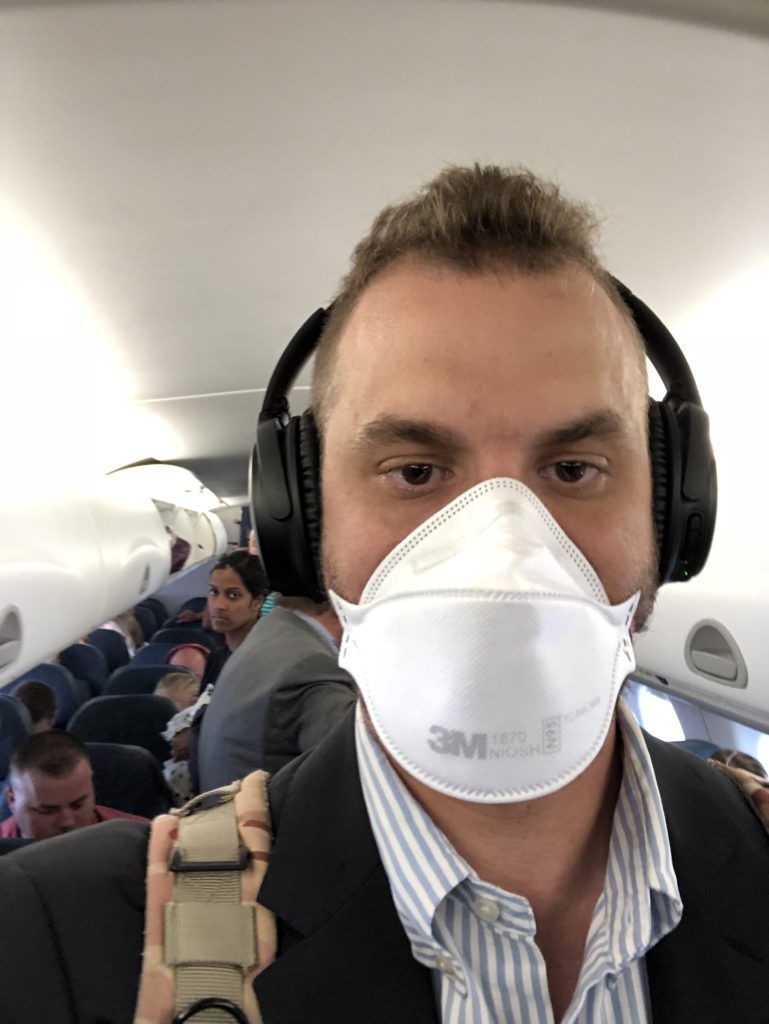Alright, folks, here we are again… talking about respirators. Think of this as a gentle reminder….
Reusable respirators are NOT suitable for people living with cystic fibrosis.
I’d like to think we’re beyond this, but the question does come up quite frequently. Unfortunately, I don’t think our care providers do a great job of explaining contact precautions, infectious disease and disease transmission (it’s hard to blame them, these are very complex topics), which is why we’re always circling back to this. Last time we discussed respirators, we looked at the CFF’s statement on the issue, but today we will look at what the CDC recommends, and how they interpret safe practices in the presence of contact precautions and infectious disease.
Let me reiterate it, Vogmask, Cambridge Mask and others are not worth your time or money. They look sleek, make big promises and have visible social media profiles, but that doesn’t mean they are the masks you should be wearing in a health care setting.
The big one I have seen recently is the Cambridge Mask, which even boasts CF fundraising! How kind of them.
https://www.instagram.com/p/BuL8dGvgcMk/
Here’s the problem with these kinds of respirators… they’re reusable, and since cystic fibrosis is an infectious disease, we need to be cognizant of what masks we’re using in the clinical setting.
The Cystic Fibrosis Infection Prevention and Control guidelines recommend an N95 respirator (which is VERY different from the paper masks most clinics hand out), and the CDC recommends a disposable N95 respirator in the presence of infectious disease.
This isn’t just about protecting YOU, it’s about protecting other patients, too.
Here’s what the CDC has to say about reusable masks:
The most significant risk is of contact transmission from touching the surface of the contaminated respirator. One study found that nurses averaged 25 touches per shift to their face, eyes, or N95 respirator during extended use.(15)Contact transmission occurs through direct contact with others as well as through indirect contact by touching and contaminating surfaces that are then touched by other people.
Respiratory pathogens on the respirator surface can potentially be transferred by touch to the wearer’s hands and thus risk causing infection through subsequent touching of the mucous membranes of the face (i.e., self-inoculation). While studies have shown that some respiratory pathogens (22-24) remain infectious on respirator surfaces for extended periods of time, in microbial transfer (25-27) and reaerosolization studies (28-32) more than ~99.8% have remained trapped on the respirator after handling or following simulated cough or sneeze.
Respirators might also become contaminated with other pathogens acquired from patients who are co-infected with common healthcare pathogens that have prolonged environmental survival (e.g., methicillin-resistant Staphylococcus aureas, vancomycin-resistant enterococci, Clostridium difficile, norovirus, etc.). These organisms could then contaminate the hands of the wearer, and in turn be transmitted via self-inoculation or to others via direct or indirect contact transmission.
What does all of that mean? The CDC is basically saying that, yes your N95 masks (both reusable and disposable) can be contaminated, which is why we throw away our disposable ones, and urge patients not to use reusable ones! In fact, here’s a CDC recommendation:
- Discard N95 respirators following close contact with any patient co-infected with an infectious disease requiring contact precautions.
This is the point where I say, don’t believe me? Ask your physician to swab your mask next time you’re in the clinic.
Reusable masks certainly can be useful in an environmental setting or hazardous workplace. For example, if you live in high-smog area, your Cambridge Mask or Vogmask may do the trick – after all, that is what they claim to be useful for.
I’m so anal about this because patient safety is a priority of mine, and I do not appreciate mass marketing campaigns designed to exploit patient fear or individual situations. I don’t think the manufacturers behind these things have ill intentions, but we know there is a risk involved with using reusable masks.
In fact the CDC actually lists approved surgical N95 and N99 respirators HERE and HERE. Guess which brands are missing?
This isn’t about living inside a bubble, no. It’s about using the mechanisms in place to prevent the spread of infectious disease.
Ultimately it’s important to consult with your physicians about this, and if you want to direct the conversation, after all, we only get so much time to chat during a visit, come armed with information from the CDC, CFF and the FDA. This is a very specific issue, so you want to make sure you’re talking about the most up to date science around the issue.
Here’s a picture of me in a disposable N95 mask to finish off the blog post.
None of the GunnarEsiason.com blog posts and podcasts should be considered medical advice. Such advice can only be given by a physician who is experienced with cystic fibrosis. The contributors on this blog/podcast, and/or the Boomer Esiason Foundation cannot be held responsible for any damage which may result from using the information on this blog/podcast without permission of their medical doctor. These blog posts are strictly informational, and utilize peer reviewed papers and/or information from government regulators as the basis of support.




